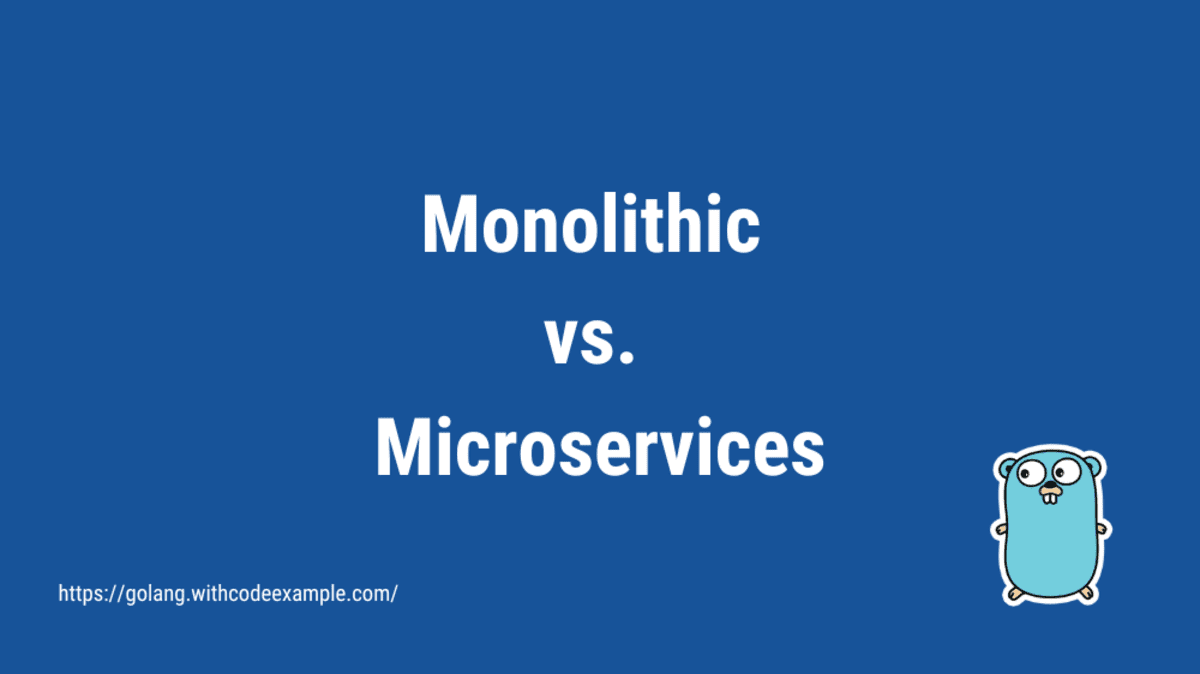Software architecture is the fundamental organization of a software system, embodied in its components, their relationships to each other and the environment, and the principles guiding its design and evolution. It serves as the blueprint for both the system and the project developing it, defining the work assignments that must be carried out by design and implementation teams.
{{< toc >}}
The importance of software architecture cannot be overstated. It directly impacts:
- System Quality: Architecture influences system qualities such as performance, security, and scalability.
- Maintainability: A well-designed architecture makes it easier to understand, modify, and extend the system over time.
- Reusability: Good architecture promotes the reuse of components and design patterns across projects.
- Project Success: Architecture decisions made early in the development process can have a significant impact on the project’s success or failure.
In this article, we’ll focus on two prominent architectural styles: monolithic and microservices. Each has its own set of principles, advantages, and challenges, which we’ll explore in depth.
Monolithic Architecture: The Traditional Approach
Definition and Key Characteristics
Monolithic architecture is a traditional unified model for designing software applications. In a monolithic architecture, all components of the application are interconnected and interdependent, typically sharing a single codebase and database.
Key characteristics include:
- Single Codebase: All functional components of the application reside within a single codebase.
- Shared Resources: Components share the same memory space and resources.
- Tightly Coupled Components: Changes in one component can affect the entire system.
- Single Deployment Unit: The entire application is deployed as a single unit.
- Vertical Scaling: Typically scaled by running multiple copies behind a load balancer.
Example Implementation
Let’s delve deeper into our monolithic architecture example using Go:
package main
import (
"database/sql"
"fmt"
"log"
"net/http"
_ "github.com/lib/pq"
)
var db *sql.DB
func init() {
var err error
db, err = sql.Open("postgres", "postgres://user:password@localhost/myapp?sslmode=disable")
if err != nil {
log.Fatal(err)
}
}
func registerHandler(w http.ResponseWriter, r *http.Request) {
if r.Method != http.MethodPost {
http.Error(w, "Method not allowed", http.StatusMethodNotAllowed)
return
}
username := r.FormValue("username")
password := r.FormValue("password")
_, err := db.Exec("INSERT INTO users (username, password) VALUES ($1, $2)", username, password)
if err != nil {
http.Error(w, "Registration failed", http.StatusInternalServerError)
return
}
fmt.Fprintf(w, "Registration successful for user: %s", username)
}
func loginHandler(w http.ResponseWriter, r *http.Request) {
if r.Method != http.MethodPost {
http.Error(w, "Method not allowed", http.StatusMethodNotAllowed)
return
}
username := r.FormValue("username")
password := r.FormValue("password")
var storedPassword string
err := db.QueryRow("SELECT password FROM users WHERE username = $1", username).Scan(&storedPassword)
if err != nil {
http.Error(w, "Login failed", http.StatusUnauthorized)
return
}
if password != storedPassword {
http.Error(w, "Invalid credentials", http.StatusUnauthorized)
return
}
fmt.Fprintf(w, "Login successful for user: %s", username)
}
func main() {
http.HandleFunc("/register", registerHandler)
http.HandleFunc("/login", loginHandler)
fmt.Println("Server started on :8080")
log.Fatal(http.ListenAndServe(":8080", nil))
}
This expanded example demonstrates several key aspects of a monolithic architecture:
- Shared Database Connection: The
dbvariable is shared across the entire application. - Unified Error Handling: Errors are handled within each function, but the approach is consistent throughout the application.
- Centralized Routing: All routes are defined in the
mainfunction. - Tight Coupling: The registration and login logic are closely integrated within the same application.
Advantages and Disadvantages
Advantages:
- Simplicity: Monolithic applications are straightforward to develop, test, and deploy, especially for small to medium-sized projects.
- Consistent Development Experience: With a single codebase, developers can easily understand and work on different parts of the application.
- Performance: Direct method calls between components can be faster than network calls in distributed systems.
- Easier Debugging: Tracing issues within a single codebase can be simpler than in distributed systems.
Disadvantages:
- Scalability Challenges: Scaling specific components independently is difficult.
- Technology Lock-in: Changing or upgrading the technology stack affects the entire application.
- Deployment Complexity: Any change requires redeploying the entire application.
- Reduced Fault Isolation: A bug in any module can potentially bring down the entire system.
- Difficulty in Adopting New Technologies: Integrating new technologies or frameworks can be challenging and risky.
Microservices Architecture: The Modern Paradigm
Definition and Key Characteristics
Microservices architecture is an approach to developing a single application as a suite of small, independently deployable services, each running in its own process and communicating with lightweight mechanisms, often HTTP/REST APIs [2].
Key characteristics include:
- Service Independence: Each microservice can be developed, deployed, and scaled independently.
- Domain-Driven Design: Services are organized around business capabilities.
- Decentralized Data Management: Each service typically manages its own database.
- Smart Endpoints and Dumb Pipes: Services communicate over simple protocols like HTTP/REST.
- Polyglot Architecture: Different services can use different technology stacks.
- Automated Deployment: Continuous Integration and Continuous Deployment (CI/CD) practices are often used.
Example Implementation
Let’s expand our microservices example in Go:
User Registration Microservice:
package main
import (
"database/sql"
"encoding/json"
"fmt"
"log"
"net/http"
_ "github.com/lib/pq"
)
var db *sql.DB
func init() {
var err error
db, err = sql.Open("postgres", "postgres://user:password@localhost/userdb?sslmode=disable")
if err != nil {
log.Fatal(err)
}
}
type User struct {
Username string `json:"username"`
Password string `json:"password"`
}
func registerHandler(w http.ResponseWriter, r *http.Request) {
if r.Method != http.MethodPost {
http.Error(w, "Method not allowed", http.StatusMethodNotAllowed)
return
}
var user User
err := json.NewDecoder(r.Body).Decode(&user)
if err != nil {
http.Error(w, "Invalid request body", http.StatusBadRequest)
return
}
_, err = db.Exec("INSERT INTO users (username, password) VALUES ($1, $2)", user.Username, user.Password)
if err != nil {
http.Error(w, "Registration failed", http.StatusInternalServerError)
return
}
w.WriteHeader(http.StatusCreated)
fmt.Fprintf(w, "Registration successful for user: %s", user.Username)
}
func main() {
http.HandleFunc("/register", registerHandler)
fmt.Println("Registration microservice started on :8081")
log.Fatal(http.ListenAndServe(":8081", nil))
}
User Authentication Microservice:
package main
import (
"database/sql"
"encoding/json"
"fmt"
"log"
"net/http"
_ "github.com/lib/pq"
)
var db *sql.DB
func init() {
var err error
db, err = sql.Open("postgres", "postgres://user:password@localhost/userdb?sslmode=disable")
if err != nil {
log.Fatal(err)
}
}
type Credentials struct {
Username string `json:"username"`
Password string `json:"password"`
}
func loginHandler(w http.ResponseWriter, r *http.Request) {
if r.Method != http.MethodPost {
http.Error(w, "Method not allowed", http.StatusMethodNotAllowed)
return
}
var creds Credentials
err := json.NewDecoder(r.Body).Decode(&creds)
if err != nil {
http.Error(w, "Invalid request body", http.StatusBadRequest)
return
}
var storedPassword string
err = db.QueryRow("SELECT password FROM users WHERE username = $1", creds.Username).Scan(&storedPassword)
if err != nil {
http.Error(w, "Login failed", http.StatusUnauthorized)
return
}
if creds.Password != storedPassword {
http.Error(w, "Invalid credentials", http.StatusUnauthorized)
return
}
fmt.Fprintf(w, "Login successful for user: %s", creds.Username)
}
func main() {
http.HandleFunc("/login", loginHandler)
fmt.Println("Authentication microservice started on :8082")
log.Fatal(http.ListenAndServe(":8082", nil))
}
These examples demonstrate key microservices principles:
- Service Independence: Each service has its own
mainfunction and runs independently. - Focused Responsibility: Each service handles a specific function (registration or authentication).
- Independent Deployment: Services can be deployed and scaled separately.
- API-Based Communication: Services expose HTTP endpoints for communication.
Advantages and Disadvantages
Advantages:
- Scalability: Individual services can be scaled independently based on demand.
- Technology Diversity: Different services can use different technology stacks.
- Resilience: Failure in one service doesn’t necessarily affect others.
- Ease of Understanding: Smaller codebases are often easier to understand and maintain.
- Faster Deployment: Smaller services can be deployed more quickly and frequently.
Disadvantages:
- Increased Complexity: Managing a distributed system introduces new challenges.
- Network Latency: Communication between services over a network can introduce latency.
- Data Consistency: Maintaining data consistency across services can be challenging.
- Testing Complexity: Testing interactions between services can be more difficult than in a monolithic system.
- Operational Overhead: Monitoring and managing multiple services requires more sophisticated tooling and processes.
Comparative Analysis: Monolithic vs. Microservices
| Aspect | Monolithic | Microservices |
|---|---|---|
| Development Speed | Faster initially, slows down as complexity increases | Slower initially, maintains speed as complexity increases |
| Scalability | Limited, entire application must be scaled | Highly scalable, individual services can be scaled independently |
| Maintenance | Challenging as size increases | Easier to maintain individual services, but overall system complexity increases |
| Deployment | Single unit deployment, any change requires full redeployment | Independent service deployment, allows for more frequent updates |
| Technology Stack | Uniform across application | Flexible, can use different technologies for different services |
| Data Management | Typically uses a single, shared database | Each service can have its own database, following the database-per-service pattern |
| Communication | In-process method calls | Network calls (e.g., HTTP/REST, gRPC) |
| Testing | Easier to perform end-to-end testing | More complex integration testing, but easier unit testing |
| Fault Isolation | A fault can potentially bring down the entire system | Faults are typically isolated to individual services |
| Team Structure | Suited for smaller, centralized teams | Better for larger organizations with multiple teams |
Making the Right Choice for Your Project
Choosing between monolithic and microservices architecture is a critical decision that can significantly impact your project’s success. Here are key factors to consider:
-
Project Size and Complexity:
- For smaller projects or MVPs, a monolithic architecture might be more suitable due to its simplicity.
- For large, complex applications, especially those expected to grow significantly, microservices can offer better long-term scalability and maintainability.
-
Team Size and Structure:
- Smaller teams might find it easier to manage a monolithic architecture.
- Larger organizations with multiple teams can benefit from the independent development and deployment offered by microservices.
-
Scalability Requirements:
- If your application needs to scale specific components independently, microservices offer more flexibility.
- If your scaling needs are straightforward, a monolithic architecture might suffice.
-
Development Speed and Time-to-Market:
- For rapid prototyping or when you need to get to market quickly, a monolithic architecture can be faster to develop initially.
- Microservices can offer faster development cycles in the long run, especially for larger applications.
-
Flexibility and Technology Adoption:
- If you need the flexibility to use different technologies for different parts of your application, microservices are more suitable.
- If you prefer a consistent technology stack throughout your application, a monolithic architecture might be preferable.
-
Operational Capabilities:
- Microservices require more sophisticated operational capabilities, including robust CI/CD pipelines, monitoring, and service discovery.
- If your team lacks experience with these technologies, starting with a monolithic architecture and gradually transitioning to microservices might be a better approach.
-
Data Management:
- If your application requires complex transactions spanning multiple services, a monolithic architecture might be easier to manage.
- If your data can be clearly partitioned along service boundaries, microservices can offer better data isolation and scalability.
Remember, these architectures are not mutually exclusive. Many successful systems use a hybrid approach, starting with a monolithic architecture and gradually decomposing it into microservices as the need arises.
Case Studies and Real-World Examples
Case Study 1: Netflix
Netflix is often cited as a pioneering example of successful migration from a monolithic to a microservices architecture.
Background: Netflix started as a DVD rental business with a monolithic architecture. As they transitioned to a streaming service, they faced significant scalability challenges.
Transition: Netflix began their transition to microservices in 2009. They gradually decomposed their monolithic application into hundreds of microservices.
Challenges:
– Managing the complexity of a distributed system
– Ensuring reliability in the face of network failures
– Developing tools for service discovery and load balancing
Benefits:
– Improved scalability to handle millions of concurrent streams
– Faster development cycles with independent service deployments
– Better fault isolation, preventing single points of failure from affecting the entire system
Key Takeaway: Netflix’s success demonstrates that microservices can provide the scalability and reliability needed for large-scale, high-traffic applications. However, it also




